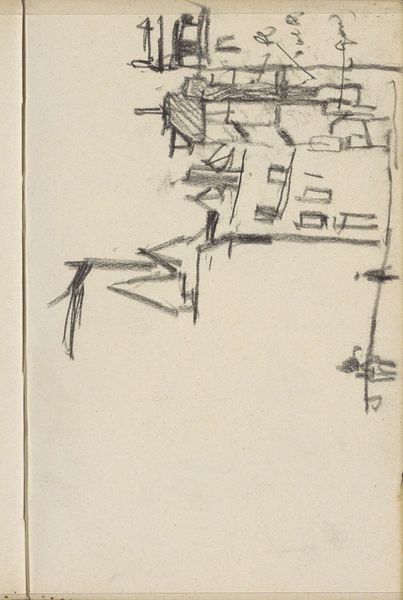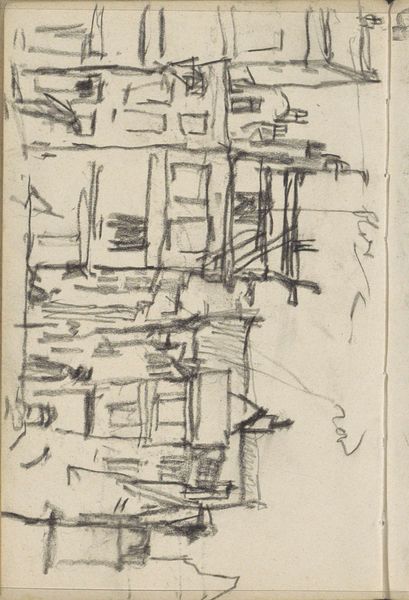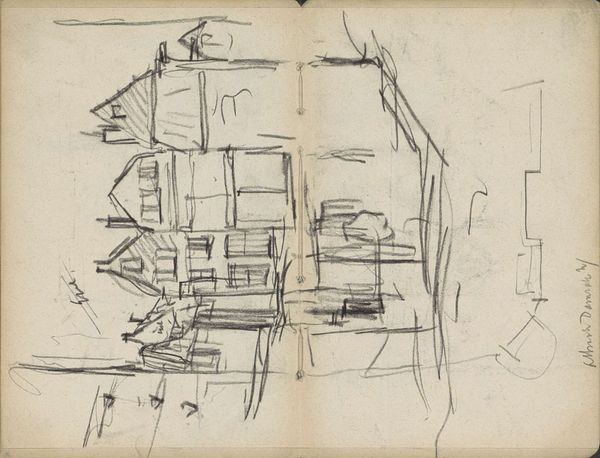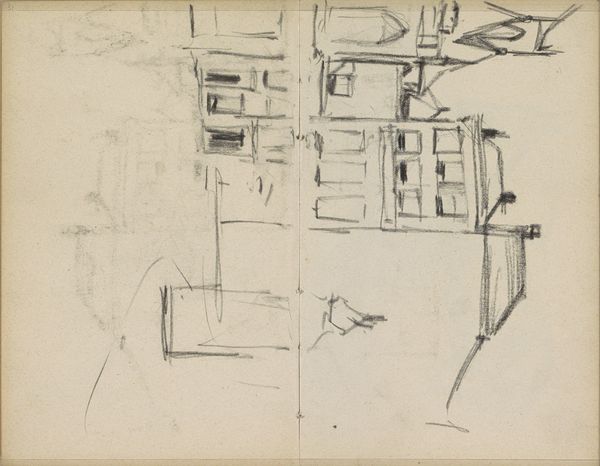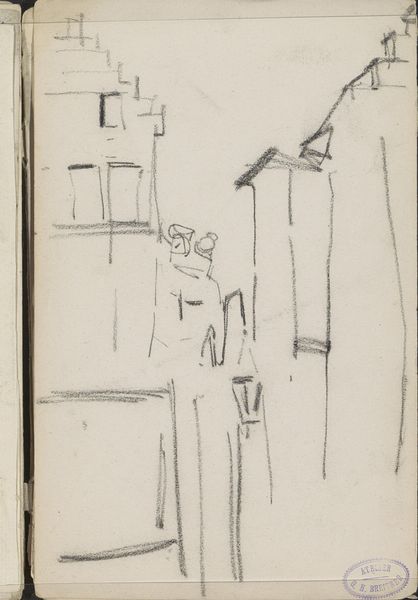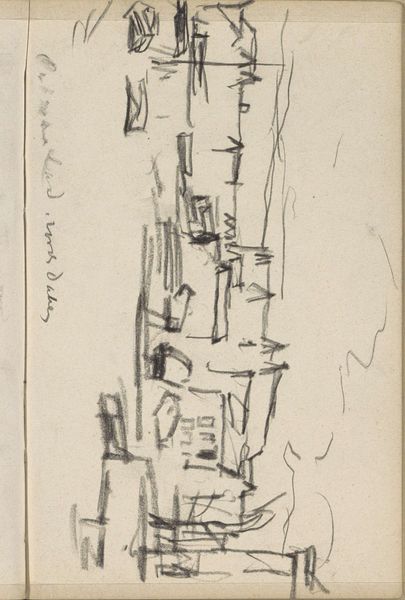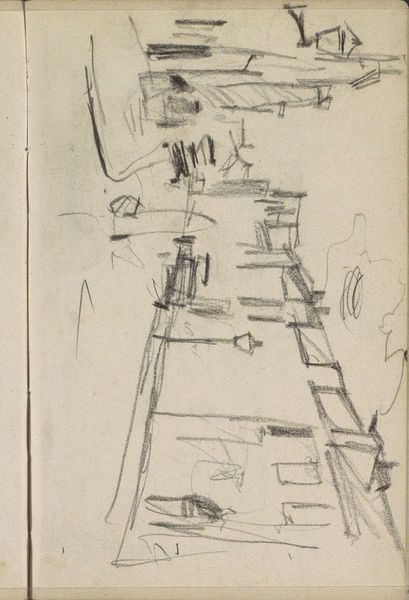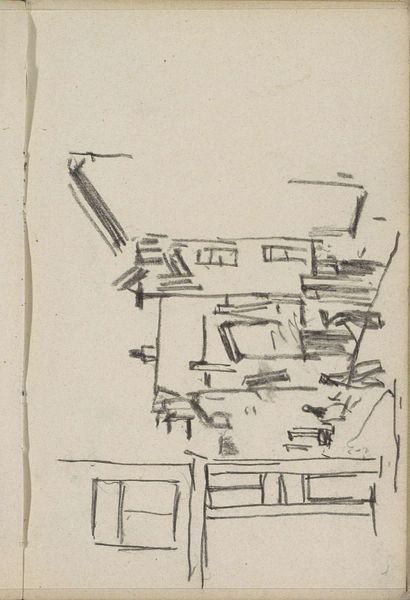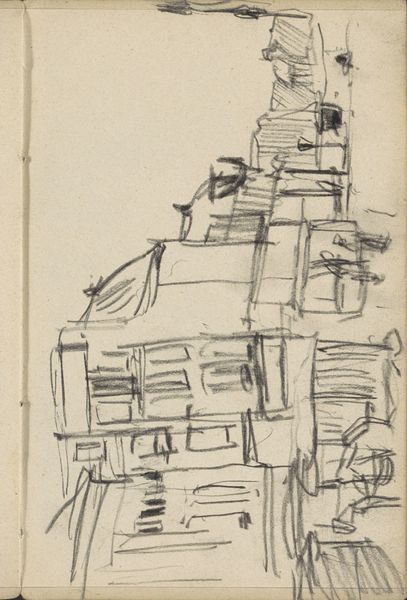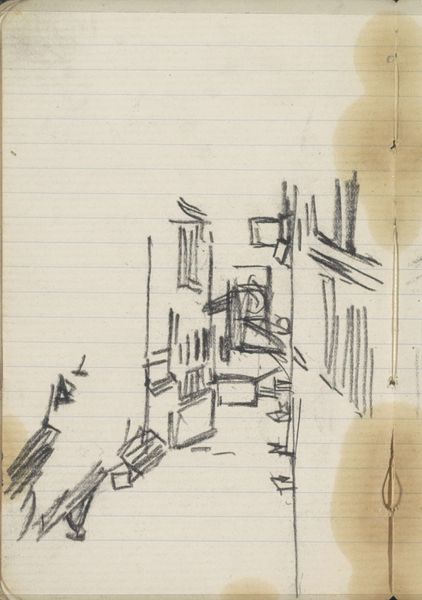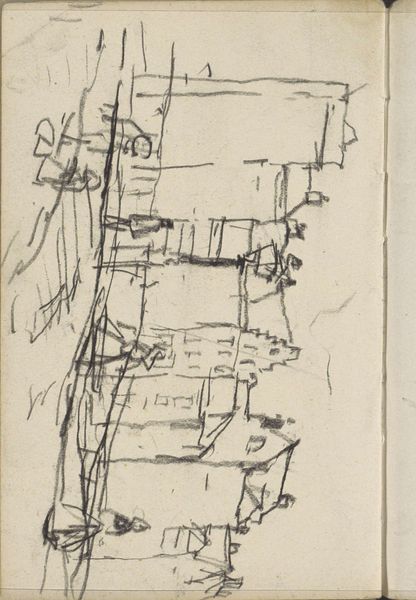
drawing, pencil
#
drawing
#
quirky sketch
#
landscape
#
personal sketchbook
#
idea generation sketch
#
sketchwork
#
ink drawing experimentation
#
pen-ink sketch
#
pencil
#
sketchbook drawing
#
storyboard and sketchbook work
#
sketchbook art
#
realism
#
initial sketch
Copyright: Rijks Museum: Open Domain
Editor: This is "Huizen aan een gracht," or "Houses on a Canal," by Cornelis Vreedenburgh, likely made between 1890 and 1946. It's a drawing in pencil and ink. It strikes me as quite preliminary, almost like a fleeting thought captured on paper. What do you see in this piece? Curator: Well, beyond the immediate impression of a quick sketch, I see a reflection of urbanization and the changing urban landscape, particularly in relation to class and access. Who were these canals for? Who lived in these houses? We often overlook the infrastructure itself as a site of power. Editor: That’s interesting. I hadn’t considered the canals themselves as anything more than… well, canals. But thinking about access, you're right. Curator: Consider, too, the viewpoint. Is the artist within the community or observing it from a distance? The act of sketching itself becomes a form of engagement – or detachment. What does that say about the artist’s role and perspective within that society? And about whose stories get told, and how? Editor: So, by looking at even a simple sketch like this, we can start to unpack some pretty complex social and political issues? Curator: Absolutely. Even the choice of medium – pencil and ink, readily available, portable – speaks to a certain accessibility and perhaps, even, a democratizing impulse. The sketch isn't precious, but it provides insight on initial design phases and, in particular, city life. It’s the art of noticing. Editor: I see what you mean. It makes me wonder what the artist ultimately intended to convey. Curator: Perhaps the more compelling question is, what can *we* glean from it now? It’s less about authorial intent and more about excavating the narratives embedded within the image. Editor: That makes me want to look at all sketches, and all art, more closely now. Curator: Indeed, and that is precisely the point of such important dialogues. Thank you!
Comments
No comments
Be the first to comment and join the conversation on the ultimate creative platform.

